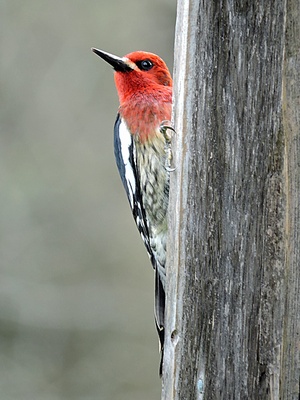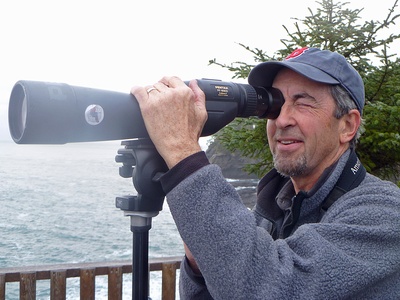Woodpeckers Part 2 - The Rest of the Story | Denny Granstrand | February 2023 | YVAS Program
General ·YVAS Chapter Meeting February 2023 - Woodpeckers: Part 2 - The Rest of the StoryAs a follow-up to his program for YVAS last year, “My Woodpecker Big Year”, Denny Granstrand will lead us on an exploration of many of the species of woodpeckers not covered in that program. A fascinating group of birds, woodpeckers inhabit almost all of the forested areas in our country and some non-forested areas as well. In Yakima County, they can be found from city parks and neighborhoods to high elevation spruce forests. Why are they attracted to areas that burned in forest fires? Most species of woodpeckers excavate a new cavity for nesting every year, usually in snags or trees with dead limbs or rotting cores. Many species of birds and mammals benefit from woodpeckers by nesting and roosting in their old cavities. Why do woodpeckers go to the effort to excavate a new cavity every year? Which woodpecker that nests in Yakima County usually doesn’t do that? Most species of woodpeckers are monogamous during nesting season but one species takes a totally different approach. Denny Granstrand has been birding for 45 years and has been photographing birds for nearly 20 years. His photos can be seen on his website at: http://www.granstrand.net/. Denny will be joining us via Zoom from his vacation rental in Oro Valley, Arizona, where he has been chasing and photographing birds this winter.
Posted by Yakima Valley Audubon Society on Saturday, March 4, 2023

As a follow-up to his program for YVAS last year, “My Woodpecker Big Year”, Denny Granstrand will lead us on an exploration of many of the species of woodpeckers not covered in that program. A fascinating group of birds, woodpeckers inhabit almost all of the forested areas in our country and some non-forested areas as well. In Yakima County, they can be found from city parks and neighborhoods to high elevation spruce forests. Why are they attracted to areas that burned in forest fires?
Most species of woodpeckers excavate a new cavity for nesting every year, usually in snags or trees with dead limbs or rotting cores. Many species of birds and mammals benefit from woodpeckers by nesting and roosting in their old cavities. Why do woodpeckers go to the effort to excavate a new cavity every year? Which woodpecker that nests in Yakima County usually doesn’t do that? Most species of woodpeckers are monogamous during nesting season but one species takes a totally different approach.

Denny Granstrand has been birding for 45 years and has been photographing birds for nearly 20 years. His photos can be seen on his website at: http://www.granstrand.net/. Denny will be joining us via Zoom from his vacation rental in Oro Valley, Arizona, where he has been chasing and photographing birds this winter.
